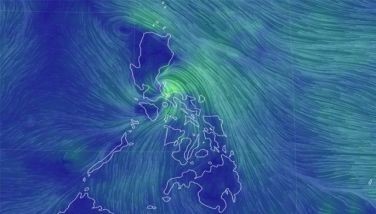More to relocate as effect of climate change-study
CEBU, Philippines - “Are second-tiered cities ready for this?”
This was one of the questions raised in a forum yesterday on the possible influx of migrants to big cities, like Cebu City, in case they are forced to evacuate because of climate change.
Jose Ma. Lorenzo Tan, vice chairman of the World Wildlife Fund Philippines National Advisory Council, said it is “high risk” for cities like Cebu if even 10 percent of the 14 million people in the National Capital Region are forced to immigrate here because of a calamity.
Tan showed a picture of a crammed airport terminal in Tacloban City after super typhoon Yolanda hit the area in November 2013. He said Cebu could be one of possible destinations in case a similar forced evacuation happens in NCR.
Tan discussed the concern in a forum yesterday hosted by the Ramon Aboitiz Foundation, Inc.
He said cities like Manila, Cebu, Davao, Baguio and others are like “magnets” for people from the urban areas resulting to an ever increasing population for the last 20 years.
In Cebu alone, there are 2,630 people per one square kilometer, Baguio has 5,000 while Metro Manila has 42,000 posing a lot of risks during earthquakes, flood and typhoons, which are expected to become regular occurrences because of climate change.
Tan presented to the forum’s participants the results of the four-year study on Business Risk Assessment and the Management of Climate Change Impacts conducted jointly by WWF Philippines and BPI Foundation, Inc.
Tan said the likelihood of experiencing the impacts of Climate Change like typhoons and El Niño is high based on the data collated for the last 20 years (1990-2009) wherein 16 cities, Cebu City included, in the country show an increasing heat temperature.
But he said, it is also important to note that the sea surface temperature is showing a similar trend, which has been increasing in the last 60 years, prompting NASA to declare 2014 as the “warmest” so far.
“With heat, more extreme weather…and this is manifested by typhoons,” Tan said.
From 1948 to 2012, he said typhoons are “stronger and stronger” and that from 2008 to 2013, their frequency is higher, from the usual 185 kilometer per hour, it has gradually increased by five to 10 KPH.
“We’ll see more typhoons like these,” he warned.
As to the rainfall, he said for the past 20 years, “higher volume” has been recorded in 16 cities, including in Cebu, Baguio, Zamboanga, Iloilo, and others.
In Baguio, the record of rainfall volume is “phenomenal” at 6,100 millimeters compared to the standard 2,400 mm in the Philippines.
Of these 16 cities, only Iloilo showed a decreasing amount of rainfall, while Cebu and Batangas recorded a “modal” or flat trend. — Liv G. Campo/ATO (FREEMAN)
- Latest






















